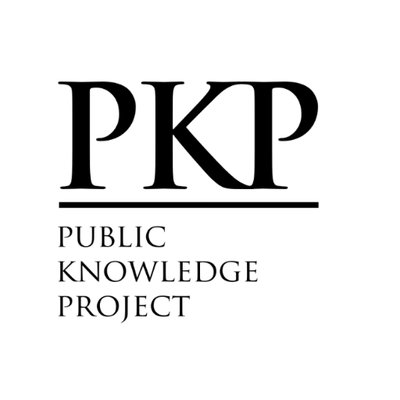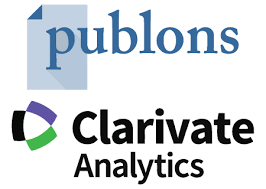Impact of ownership structure on dividend policy
Short and long term analysis using VECM approach
DOI:
https://doi.org/10.59051/joaf.v11i2.424Keywords:
Ownership structure-Dividend Policy-Unit Root-Cointegration-VECMAbstract
This article examines the ownership structure effects on dividend policy for seven companies listed on the Tunis Stock Exchange during the period 1996 to 2017. The model used in this study includes size and tangibility as control variables. In order to test the long run association ship between variables, unit root and cointegration tests are implemented. According to tests result, the study sets out to estimate a VEC model for panel data using DOLS and FMOLS cointegrating regression. One outstanding result of long term estimations is that, the ownership concentration has a negative and significant effect contrary of all other variables which affect positively and significantly the dividend policy. In the short term, tangibility has a positive and significant effect. The value of error correction terms allows appreciating a speed of adjustment towards long-run equilibrium that exceeds 65%.
Downloads
References
Aguenaou Samir, Gwilym Owain AP & Rhodes Mark., (2011), “Open interest, cross listing, and information shocks “, Journal of Futures Markets, vol. 31, n° 8, p. 755̻778.
Aguenaou, S., Farooq, O., & Di, H., (2013),” Dividend policy and ownership structure: Evidence from the Casblanca Stock Exchange”, GSTF International Journal of Business Review (GBR), 2(4), 116-121.
Al-Gharaibeh, M., Zurigat, Z., & Al-Harahsheh, K., (2013), “The effect of ownership structure on dividends policy in Jordanian companies”, Interdisciplinary Journal of Contemporary Research in Business, 4(9), 769-796.”
Al-Najjar, B., & Kilincarslan, E., (2016), “The effect of ownership structure on dividend policy: Evidence from Turkey”, Corporate Governance:The International Journal of Business in Society, 16(1), 135-161. “
Al-Nawaiseh, M. (2013): “Dividend Policy and Ownership Structure : An Applied Study on Industrial Companies in Amman Stock Exchange”, Journal of Management Research, 5(2), 83–106.
Amidu, M., (2007),”How Does Dividend Policy Affect Performance of The Firm On Ghana Stock Exchange”, Investment Management & Financial Innovations, 4(2):103-107.
Aziz, M., Richard, F., & Hanen, K., (2016), “The Relationship between Ownership Structure and Dividend Policy in an Emerging Market: A Moroccan Study”, Universal Journal of Accounting and Finance, 4(2):89-95.
Ben-Nasr, H., Boubaker, S., &Rouatbi, W., (2015), “Ownership structure, control contestability, and corporate debt maturity”, Journal of Corporate Finance 35, 265-285.
Chai, D. H., (2010), “Foreign corporate ownership and dividends”, Working Paper No. 401. Centre for Business Research, University of Cambridge.
Chen Zhilan, Cheung Yan-Leung, Stouraitis Aris & Wong Anita W. S., (2005), “Ownership concentration firm performance and dividend policy in Hong Kong”, Pacific-Basin Finance Journal. 13(4), 431-449.
Doddy, S., Lian, K.P., Hong,K.C., & Irwan Trinugroho., (2017), “CEO Turnover and Firm Performance In Indonesia”, Indonesia capital market review, 9:1-10.
Easterbrook, F., (1984), “Two agency cost explanations of dividends”, American Economic Review, 74, 650–659.
El-Masry, A.A., Abd-Elsalam, D., & Elsegini, S., (2008), “Board Composition, Ownership Structure and Dividend Policy in an Emerging Market: Further Evidence from CASE 50”, Managerial Finance, 34(12). 953-964.
Faccio, M., Lang, L.H.P. & Young, L., (2001), “Dividends and expropriation”, American Economic Review, 91, 54–78.
Gonzalez, M., Molina, C. A., Pablo, E., & Rosso, J. W., (2017), “The effect of ownership concentration and composition on dividends: Evidence from Latin America”, Emerging Markets Review, 30, 1-18.”
Harada K. &Nguyen, P., (2006), “Ownership concentration, agency conflicts, and dividend policy in Japan”, Journal of Finance, Vol. 55, pp. 1–33.
Harada, K., & Nguyen, P., (2011), “Ownership Concentration and Dividend Policy in Japan”, Managerial Finance, 37(4), 362-379.
Holderness, C. G., & Sheehan, D. P.,(1988), “ The role of majority shareholders in publicly held corporations: An exploratory analysis”, Journal of Financial Economics, 20(1), 317–346.
Berezinets, I. & Ilina, Y. & Alekseeva, L., (2014), “Ownership structure and dividend policy: A study of Russian public companies with dual class shares", Working Papers 6384, Graduate School of Management, St. Petersburg State University.
Irene Wei Kiong Ting, Qian Long Kweh & Kausalyaa Somosundaram., (2017), “Ownership Concentration, Dividend Payout and Firm Performance: The Case of Malaysia2017”, Malaysian Journal of Economic Studies 54(2): 269–280, 2017 ISSN 1511-4554.
Jensen, M., (1986), “Agency costs of free cash flow, corporate finance, and takeovers”, American Economic Review, 76, 323–329.
Joh, S. W., and Y. K. KO., (2007), “Ownership Structure and Share Repurchases in an Emerging Market: Incentive Alignment or Entrenchment? Working paper. Seoul”, Seoul National University.
Johansen, S., (1988), “Statistical Anaylsis of Cointegrating Vectors”, Journal of Economic Dynamics and Control. 12, 231 - 254.
Kouki, M. & Guizani, M., (2009), “Ownership Structure and Dividend Policy Evidence from the Tunisian Stock Market”, European Journal of Scientific Research, 25(1), 42-53.
Krismiaji & Budhi Purwantoro Jati.,(2018), “Ownership structure, international financial reporting standards, and dividend policy –evidence of Indonesia”, International Journal of Economics, Business and Management Research Vol. 2, No. 02; 2018 ISSN: 2456-7760 .
Kulathunga, K.M.K.N.S., Perera, L.A.S. & Anagipura, G.N., (2017), “The Relationship between Capital Structure and Ownership Structure: Evidence from Listed Companies in Hotel and Manufacturing Sectors in Sri Lanka. Kelaniya Journal of Management, 6(2), pp.33–51.
La porta, R., Lopez -de- Silanes, F., Vishny, R. W., (2000), “Agency problems and dividend policies around the world”, Journal of "France, 55 (1), 1–33.
Li and Zhao.,(2008), “ The effective utilization and treatment of livestock excrement in Anda area Contemporary Animal”, Hus-bandry, 3 (2008), pp. 43-45
Mancinelli, L. and Ozkan, A., (2006), “Ownership structure and dividend policy: evidence from Italian firms”, The European Journal of Finance, Vol. 12, No. 3, pp.265–282.
Maury, C.B., and Pajuste, A., (2002), “Controlling shareholders, agency problems and dividend policy in Finland”, Finnish Journal of Business Economics, 51: 15-45.
Mehar, A. (2005), corporate governance and dividend policy”, Pakistan Economic and Social Review, 42(1), 93–106.
Miller, M. H., &Rock, K., (1985), “Dividend Policy under Asymmetric Information”, Journal of Finance, 40(4), pp. 1031–1051.
Naceur, S. B., Goaied, M., & Belanes, A., (2006), “On the determinants and dynamics of dividend policy”, International Review of Finance, 6(1-2), 1-23.
Pindado, J., Requejo, I. and de la Torre, C., (2011), “Family control and investment – cash flow sensitivity: empirical evidence from the Euro zone”, Journal of Corporate Finance, Vol. 17 No. 5, pp. 1389-1409.
Ross, S.,(1977), “The Determination of Financial Structure: The Incentive Signaling Approach,” Bell Journal of Finance, 8, 23–40.
Sharif, S.J.S., Salehi, M., & Bahadori, H., (2010), “Ownership Structure of Iran Evidence and Payout Ratio”, Asian Social Sciences, 6(7).
Short, H., Zhang, H., & Keasey, K. (2002): “The link between dividend policy and institutional ownership. Journal of Corporate Finance, 8(2), 105-122.
Shubiri, F. N. A.-, Taleb, G. AL, & Zoued, A. A. – N. A.-. , (2012), “The Relationship between Ownership Structure and Dividend Policy: An Application in Vietnam Stock Exchange. Academic Journal of Interdisciplinary Studies, 8(2), 131–146.
Truong, T., & Heaney, R., (2007), “Largest shareholder and dividend policy around the world. The Quarterly Review of Economics and Finance, 47(5), 667- 687.
Vinh, D, Q., (2014), “The Effect of Foreign Ownership on Dividend Policy: The Case of Listed Companies on Hose. Master of Business Administration,Vietnam National Universıty – HoChiMinh City International University, School Of Business, Vietnam.
Warrad, L., Abed, S., Khriasat, O., & Al-Sheikh, I., (2012), “The effect of ownership structure on dividend payout policy: Evidence from Jordanian context. International Journal of Economics and Finance, 4(2): 187-195.
Wissem D, Fathi J., (2018), “Does ownership structure affects dividend policy? A panel data analysis for the French market Int. J.” Governance and Financial Intermediation, Vol. 1, No. 1, 2018.
Zunaidah, S., & Fauzias, M.N., (2008),“Dividends, ownership structure and board governance on firm value: Empirical evidence from Malaysian listed firms. Malaysian Accounting Review, 7(2), 55-94.
Downloads
Published
How to Cite
Issue
Section
License
Authors who publish with this journal agree to the following terms:
- Authors retain copyright and grant the journal right of first publication with the work simultaneously licensed under a Creative Commons Attribution License that allows others to share the work with an acknowledgement of the work's authorship and initial publication in this journal.
- Authors are able to enter into separate, additional contractual arrangements for the non-exclusive distribution of the journal's published version of the work (e.g., post it to an institutional repository or publish it in a book), with an acknowledgement of its initial publication in this journal.
- Authors are permitted and encouraged to post their work online (e.g., in institutional repositories or on their website) prior to and during the submission process, as it can lead to productive exchanges, as well as earlier and greater citation of published work (See The Effect of Open Access).






















